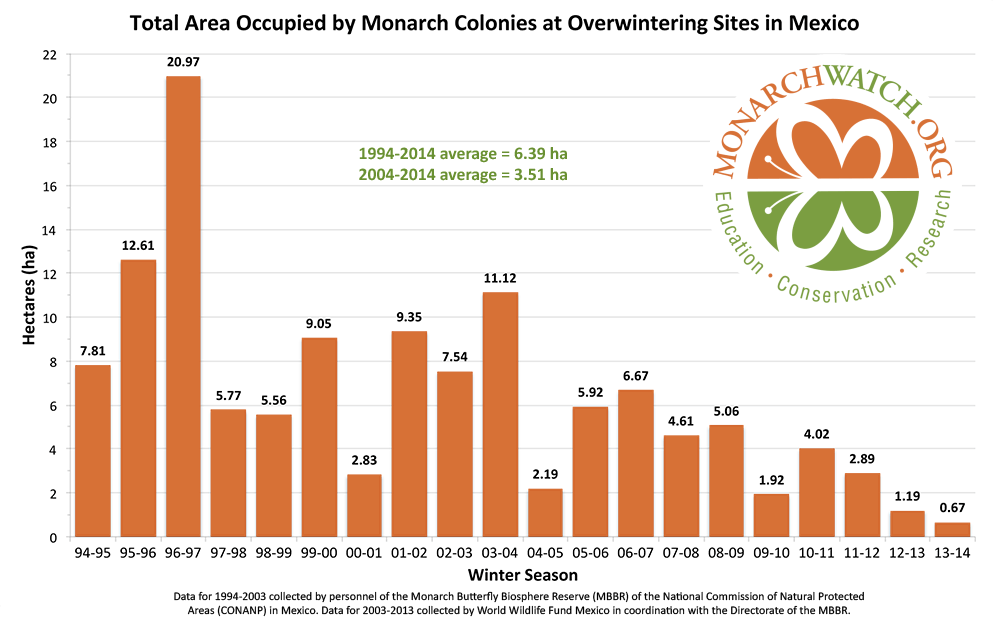 |
| A Monarch visits Joe-Pye weed this fall at NBNC |
“What happened to all the Monarchs?” This has become a
common question the past few years, as the iconic, once-common orange
butterflies are now a rare treat to find. The milkweed in fields and meadows across
Vermont that once harbored Monarch caterpillars are now devoid. So, where have
they gone?
The decline of the Monarch population began decades ago. While
the causes are varied, the primary factor thought to be responsible for the 90%
reduction in the Monarch population is the increased use of pesticides that
kill milkweed, the Monarch’s only hostplant. The Midwestern states are at the
core of the Monarch’s reproductive range, and Monarch breeding habitat there has
been rapidly disappearing. Farms that once provided marginal Monarch habitat,
with milkweed popping up between rows of corn, are now ecological deserts. The
use of glyphosate (aka round-up) on genetically modified, pesticide-resistant
crops has killed what little milkweed could grow in the mega-farms of the
Midwest (and beyond).
 |
| Source: monarchwatch.org |
Added to this are all of the other threats and stressors
that Monarchs face. Bad weather, such as droughts, unusually hot or cold
periods, and storms, can wipe out large percentages of the population or limit
their reproductive success. Illegal logging in the forests of central Mexico threatens
the important overwintering grounds of the Monarch. Predators and pathogens may
be an increasing threat as Monarchs become squeezed into smaller patches of
milkweed as their breeding habitat continues to shrink. And global warming may
pose another set of challenges that are only beginning to be realized. The
rapid decline of Monarchs has prompted a number of conservation organizations
to seek protection for the Monarch under the federal Endangered Species Act.
 |
| A Monarch tagged at NBNC, to help track its migration |
So far this fall, Monarch numbers appear up from 2013.
Sightings have been more numerous throughout Vermont and other parts of the breeding
range and the overwintering population is expected to be double that of lastyear. While this gives some hope, Monarchs need our help to be brought back
from the brink. Here are a few things you can do:
- Help preserve milkweed! Milkweed is a native plant and is common in open or disturbed areas. When it comes time to mow, be sure to leave some milkweed for the Monarchs! You can also plant milkweed to create habitat for breeding monarchs.
- Plant a butterfly garden. Late-flowering plants such as Joe-Pye weed, asters, and goldenrods provide important food sources for migrating Monarchs to refuel on their long journey.
- Report your Monarch sightings! There are several tools you can use to report butterflies, including eButterfly.org, iNaturalist.org, or you can send yourobservations to us at NBNC. (Note: The Viceroy butterfly can look a lot like a Monarch… learn how to identify a Monarch)
- Help monitor migrating Monarchs. You can order tags through monarchwatch.org, or, join NBNC for our Monarch tagging events on Wednesday afternoons at 3:30 p.m.

Thanks! I was about to call and ask about this very question. I remember roughly 40 years ago seeing them by the hundreds in a field on the CT side of Long Island Sound. I thought at first I was looking at a new species of orange flower.
ReplyDeleteThanks, Bill! That must have been quite a sight... I wonder if you were seeing the formation of an evening roost? In any case, numbers this year are definitely up from last year in Vermont. It's been great to see the Monarchs around again!
ReplyDelete